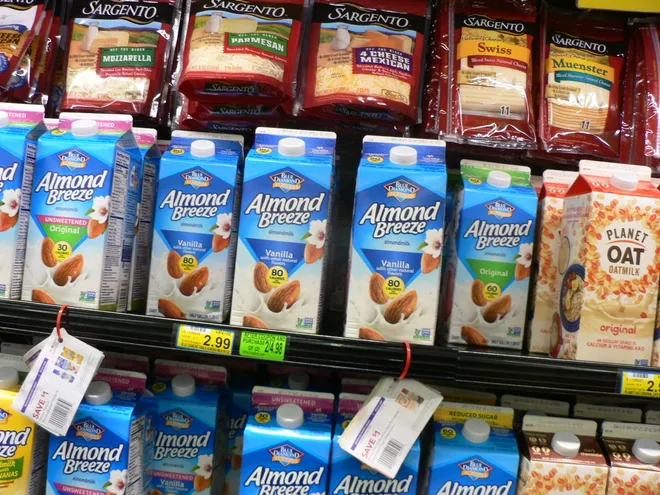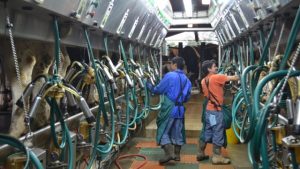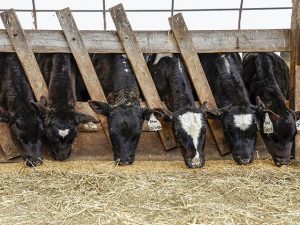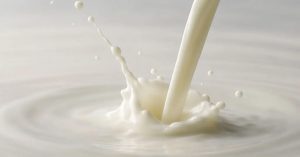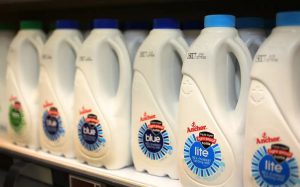
Speaking to Brownfield in Ames, Iowa, on Friday, USDA Undersecretary for Trade and Foreign Agricultural Affairs Alexis Taylor pointed out 20% of U.S. farm products are exported.
“Oftentimes, that 20% is the difference between farmer profitability or not. So, strong export markets is really critical to farmers and ranchers’ livelihoods,” she said.
Taylor says USDA hopes to sustain momentum in 2023 by diversifying market opportunities.
“Several years ago we saw what trade disruptions or an overreliance on any single market could lead to for trade disruptions, and what that actually translates for those farmers and ranchers and their income,” she told Brownfield.
Taylor mentioned potential market growth in Africa, Southeast Asia and Latin America, and says USDA is also working to knock down non-tariff trade barriers around the world.
Dairy exports break records
The final 2022 US dairy export numbers are in from USDA’s Foreign Ag Service, and they show that 2022 was a very impressive year for dairy exports. It was a record-breaking year in many ways, but it might be more accurate to call it a record-shattering year,” summarizes Dick Groves editor of The Cheese Reporter.
“For starters, overall US dairy exports last year reached $9.5 billion in value. That was up 25% or $1.9 billion, from 2021’s record value of $7.6 billion,” he said.
December cheese production in the states listed by NASS, with comparisons to December 2021, was: Wisconsin, 300.3 million pounds, up 1.4%; California, 209.0 million pounds, up 2.0%; Idaho, 86.9 million pounds, down 1.5%; New Mexico, 83.5 million pounds, down 0.8% ; New York, 72.4 million pounds, up 9.5%.
Fake dairy not new
Imitation food products have been on the consumer market for decades. Remember the long battle the dairy industry waged with oleo margarine (beginning in the 1870’s that was finally ended in the 1960’s with oleo winning a place in the store shelves despite a host of federal and state laws?
Because of the limited success of patchwork state regulation, Congress was convinced in 1886 to pass “The Oleomargarine Act” which defined butter to distinguish it from imitations and taxed oleomargarine two cents per pound. It also assessed annual license fees of $600 for manufacturers, $480 for wholesalers, and $48 for retailers.
Production of oleomargarine grew slowly until the butter shortages of World War II, when oleomargarine production grew by 542 million pounds per year and butter production fell by a similar amount.
In 1950, Congress removed the tax, and by the late 1950s, the two were produced in similar amounts. In the 1980s twice as much oleomargarine was produced, but by 2010, more butter was again being produced. Once the protective tax was removed, competitive consumption depended mostly on perceived health benefits.
Now it’s milk and meat
Now many types of farm-produced foods are being attacked by imitations, just look at the dairy section of most any food market, chances are you will find soy, almond and, yes, even oat milk. I’ve long wondered how these milks have been made. Recently, this recipe for oat milk appeared on several web sites.
-Blend 1 cup of rolled or steel cut oats with 3 cups of cold water for 30 seconds.
-Place a cheesecloth over a wide-mouth jar or bottle. Pour the mixture over the cheesecloth to separate the milk from the oats.
-Lift the cloth from the ends to form a sac, and gently squeeze any remaining liquid into the jar.
-To enhance the flavor, try adding either a pinch of salt, a little vanilla or cinnamon extract, a few dates, maple syrup, or honey before blending.
-You can safely store the oat milk in your refrigerator for up to 5 days.
Doesn’t that sound nutritious? It seems one can add water to about anything and call it milk!
Where’s the meat? In the stores!
In 2009, Beyond Meat, a so-called meat made without animals, hit the consumer market. It was followed by many other companies and a host of big time investors and much discussion by meat processors and beef farmers. Even Tyson, the biggest U.S. meat processor was an investor.
Now it’s 2023 and Big Beef is still around and booming while fake meats have laid off employees, abandoned some products and fast food has not expanded menus with fake meats.
A recent eight-page article in the January 23 issue of Bloomberg Business week, Fake Meat Was Supposed to Save the World. It Became Just Another Fad, traces the fake meat story from start to now. The author writes how Beyond Meat and Impossible Foods wanted to upend the world’s $1 trillion meat industry. However, she concludes that plant-based meat is turning out to be a flop.
Every one associated with the meat industry (farmers for sure) should read this super story. If you can’t buy one try the library. It’s great.
